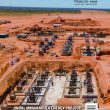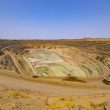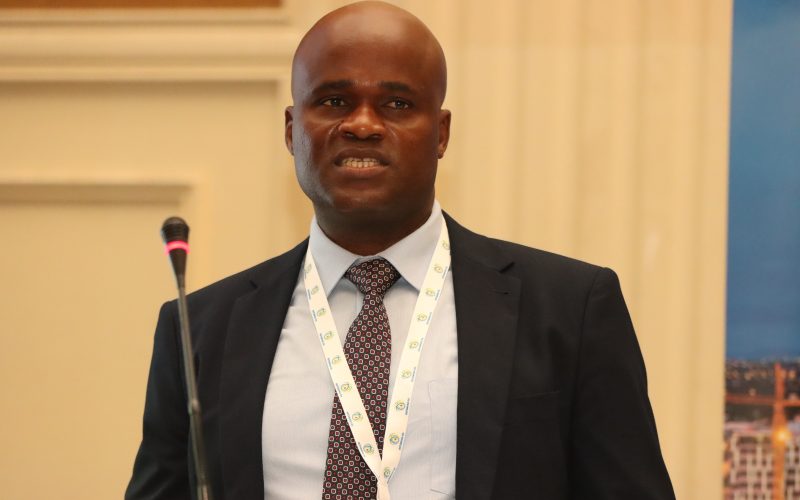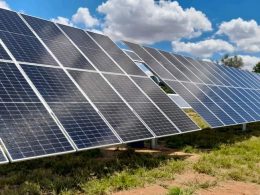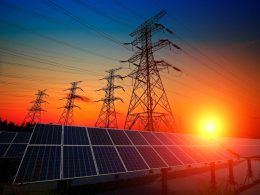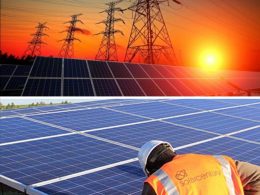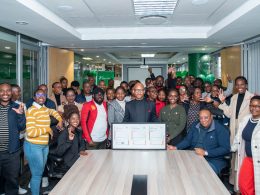The Projects |Green Energy
Debswana Diamond Company, the country’s leading mining company, has set itself a determined target of being carbon-neutral by 2030. This goal was highlighted by Debswana Senior Carbon and Energy Manager, Mr. Ishmael Motlhale at the Botswana Resource Infrastructure Energy Forum (BRIEF) held in Gaborone on the 16th and 17th of May 2022.
Motlhale who was a participant on the Green Energy for Botswana panel discussion, indicated that sustainability is key to Debswana, and they manage it through a framework that they have developed called Building Forever. The framework is informed by Government of Botswana and De Beers as the shareholders. It has a number of pillars, and one of the pillars is Protecting the Natural World.
Under Protecting the Natural World pillar, Debswana’s vision is to be carbon-neutral, minimize water footprint and deliver a net positive impact on biodiversity by 2030. This entails taking care of the environment and addressing issues of climate change.
“We have developed a strategy on how are we going to be carbon neural by 2030. Our strategy has four areas of focus. The first focus area is reducing energy intensity, which is about how to make sure that our processes are more efficient, which is about how do we embed energy use in our business process and in our business design during our hours of work,” Motlhale said. “We believe that there is a lot that can be achieved from driving efficiencies.”
Another focus is finding alternative to diesel because Debswana uses diesel in large quantities and diesel is one sources of carbon emissions, and therefore the company is looking for other means to fuel their engineering assets , equipment and machinery.
“We did a consultative study. We went into the market to see what alternatives are there, and we identified hydrogen as having a potential for energy to replace diesel,” Motlhale stated.
“We also identified, biodiesel. Biodiesel is whereby you do not use diesel as it is, but you blend it with neutral oil, like cooking oil from restaurants. That idea we got it from the University of Botswana, where they have been running their vehicles on biodiesel — they blend a portion of diesel and oil from Botswana Meat Commission.”
The third focus area is decarbonizing electricity. All the electricity that Debswana uses comes from BPC, which is from a coal powered station. Debswana is looking at how it can decarbonize the electricity sourced from BPC. The company is therefore exploring several sources of energy.
“It is clearly solar, and also wind. Initially, we believed that wind is not a viable option for Botswana. There are areas in Botswana that have got very good wind potentials. So, we are doing studies to explore those areas further to a level whereby we can even put physical mast to take actually measurements. We want to develop the work to that level and that will inform what installations we put where in Botswana,” said Motlhale.
“The fourth one, we say, we acknowledge that we cannot replace everything. There may be emissions that we cannot replace, so we are looking at what interventions we can put in place to recover the carbon dioxide from the atmosphere.”
Debswana is looking at carbon recovery methodologies that are there and one of the major options that the company is currently working on, is a kimberlite, which is the rock from which the diamond comes from. It has the natural properties to react with carbon dioxide.
“One of the initiatives that we have, is to look at how we can unlock those minerals that can be free to react with carbon dioxide. By so doing, you are trapping the carbon dioxide.” Motlhale explained.
Debswana has identified key enablers and one of the enablers is partnership or effective partnerships, with the government, instead of going with it on its own. This means collaborating with institutions such as BPC and University of Botswana.
“We believe there is a lot that we can achieve by leveraging partnerships. The other enable is green financing; we are looking for institutions that will support us because some of the interventions that we are going to put in place are quite capital intensive, so we want to explore what opportunities are there. Instead of taking the money out of government coffers, we consider getting help from other institutions,” Motlhale said.
Motlhale said by 2030 Debswana should be carbon-neutral, either through emitting nothing, or if they are emitting something, they will have an alternative in place to recover or offset that emission.
“Eight years from now, we want to make sure that our operations are carbon-neutral. The other targets, with regard to large-scale interventions regarding solar and wind, we have a roadmap and a plan of what needs to be done by when,” said Motlhale.
2030 CARBON EMISSION TIMELINE
| YEAR | TARGET |
| 2023 | Completion of studies relating to solar |
| 2024 | Implementation – installation of large scale solar projects |
| 2025 | Production of solar power |
| 2026 | Introduction of hydrogen |
| 2028 | Introduction of wind powered energy |
| 2029 | Decision on energy storage |
| 2030 | Carbon Neutral |
2030 GOALS: DEBSWANA CLIMATE CHANGE PLEDGES
By 2030, we will be carbon neutral across our operations
Replace: by 2030 we will reduce energy intensity across our business by capturing efficiencies and implementing our pioneering FutureSmart Mining™ [4] programme. Through breakthrough technology and digitalisation this programme will change the way we mine, making it more effective, efficient and sustainable.
Replace: by 2030 we will replace most of our fossil fuels with green alternative fuels to power our trucks and vessels, and we will partner to create renewable energy sources and replace nearly all fossil-fuelled electricity by developing dedicated wind and solar power plants.
Recover: by 2030 we will recover all remaining carbon emissions through innovative nature-based and technical solutions, such as our ground-breaking CarbonVault project, which captures carbon from the atmosphere and locks it away in kimberlite rock.
By the end of 2021, we will have worked with our suppliers and clients to better understand and measure our Scope 3 data across our entire value chain and include it within our carbon neutral roadmap using our Reduce, Replace, Recover framework

